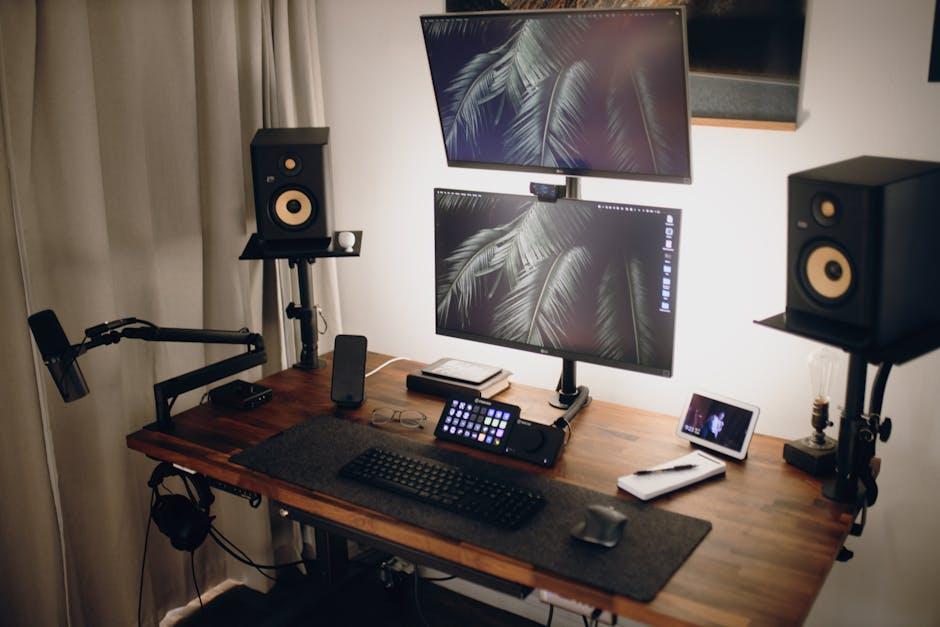In today’s digital age, streaming sticks have become an essential tool for accessing a vast array of entertainment options directly on your television. However, nothing disrupts a binge-watching session quite like constant buffering. Whether you’re new to the world of streaming devices or looking to optimize your current setup, ensuring a buffer-free viewing experience is key to enjoying your favorite shows and movies seamlessly. This guide will walk you through the step-by-step process of setting up your streaming stick, from the initial connection to fine-tuning your network settings, so you can enjoy uninterrupted streaming every time.
Choosing the Right Streaming Stick for Your Needs
When it comes to finding the perfect streaming stick for your home entertainment setup, there are several key factors to consider. Firstly, evaluate the compatibility of the device with your TV. Ensure it supports the HDMI input and has the necessary power requirements. Next, consider the user interface and ease of navigation. A stick with a user-friendly interface can significantly enhance your viewing experience, allowing you to effortlessly browse through content.
Moreover, assess the content availability of the streaming stick. Some devices offer exclusive access to certain streaming services or channels, which might be a deciding factor based on your viewing preferences. Also, check the connectivity options, including Wi-Fi compatibility and the availability of Ethernet ports, as these can impact streaming quality. think about the budget. Streaming sticks come in a range of prices, so it’s important to find one that meets your needs without breaking the bank.
- Compatibility: Ensure it works with your TV’s HDMI input.
- User Interface: Look for intuitive navigation.
- Content Availability: Access to your favorite services is crucial.
- Connectivity: Wi-Fi and Ethernet options for optimal streaming.
- Budget: Choose one that fits your financial plan.
Optimizing Your Internet Connection for Seamless Streaming
Ensuring a smooth streaming experience begins with the right internet setup. Boost your Wi-Fi signal by positioning your router in a central location, away from walls and obstructions. Avoid interference by placing it at least three feet away from microwaves and cordless phones. For those using dual-band routers, connect your streaming stick to the 5GHz band to minimize congestion. If your router supports Quality of Service (QoS) settings, prioritize streaming devices to ensure they receive adequate bandwidth.
To further optimize your connection, consider these strategies:
- Limit simultaneous connections: Disconnect devices not in use to free up bandwidth.
- Update your router’s firmware: Manufacturers often release updates to enhance performance and security.
- Use a wired connection: If possible, connect your streaming stick via Ethernet for a more stable connection.
- Regularly restart your router: This can help clear cache and resolve connectivity issues.

Configuring Your Streaming Stick Settings for Maximum Performance
To ensure your streaming stick delivers seamless, buffer-free entertainment, it’s essential to fine-tune its settings. Begin by connecting to a 5GHz Wi-Fi network if available. This frequency often provides faster speeds and less interference compared to the more crowded 2.4GHz band. Next, ensure your device’s firmware is up-to-date. Manufacturers regularly release updates that can enhance performance and fix bugs. Navigate to the settings menu and look for a firmware update option to keep your streaming stick running smoothly.
- Resolution Settings: Adjust the video output to match your TV’s capabilities. If your TV supports 4K, enable this option for superior picture quality. However, if bandwidth is a concern, switching to 1080p can reduce buffering.
- Background App Management: Close unused apps running in the background to free up system resources. This can significantly improve streaming performance and reduce latency.
- Energy Saving Modes: Disable any energy-saving settings that may throttle performance. These modes can limit the device’s processing power, causing interruptions during playback.
consider repositioning your router or using a Wi-Fi extender to improve signal strength. A strong, stable connection is crucial for uninterrupted streaming, and optimizing your device’s settings will go a long way in achieving a buffer-free experience.

Troubleshooting Common Buffering Issues
Buffering can be a real buzzkill when you’re in the middle of your favorite show. Here are some steps to help you tackle this issue effectively:
- Check Your Internet Speed: Ensure that your internet connection meets the minimum requirements for streaming. You can use online tools to test your speed. If it’s below the recommended threshold, consider upgrading your plan or contacting your service provider.
- Optimize Wi-Fi Connection: Place your router in a central location and away from obstructions like walls or electronic devices. Consider using a Wi-Fi extender to boost signal strength if your streaming stick is far from the router.
- Update Firmware: Keeping your streaming stick’s firmware up-to-date can resolve compatibility issues and improve performance. Navigate to the settings menu and check for any available updates.
- Close Unused Apps: Background apps can consume bandwidth and processing power. Make sure to close any apps that aren’t in use to free up resources for smoother streaming.
- Adjust Video Quality: Lowering the streaming quality can significantly reduce buffering. Most streaming services allow you to change the quality settings; opt for a lower resolution if buffering persists.
By following these tips, you can enhance your viewing experience and enjoy seamless streaming without interruptions.







































